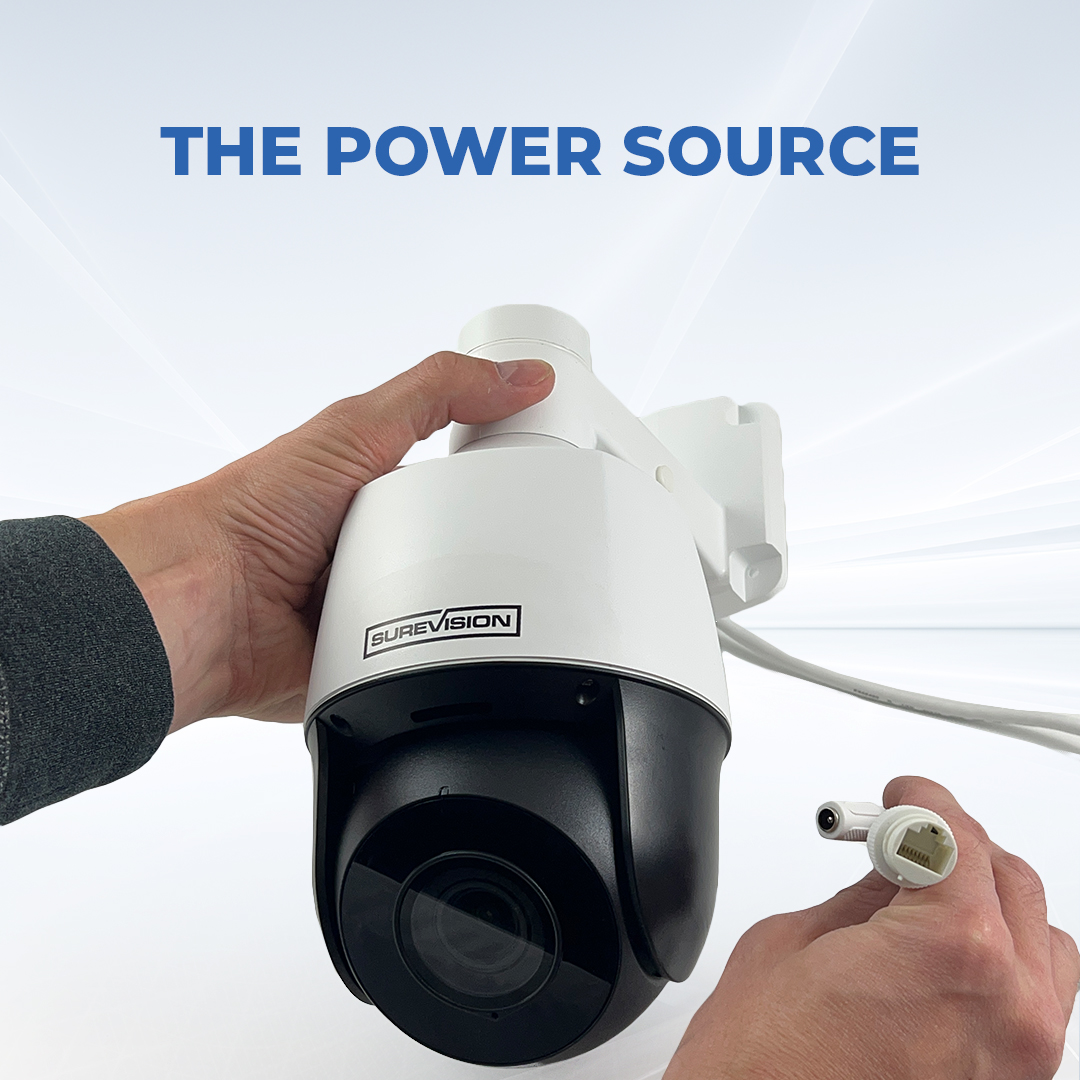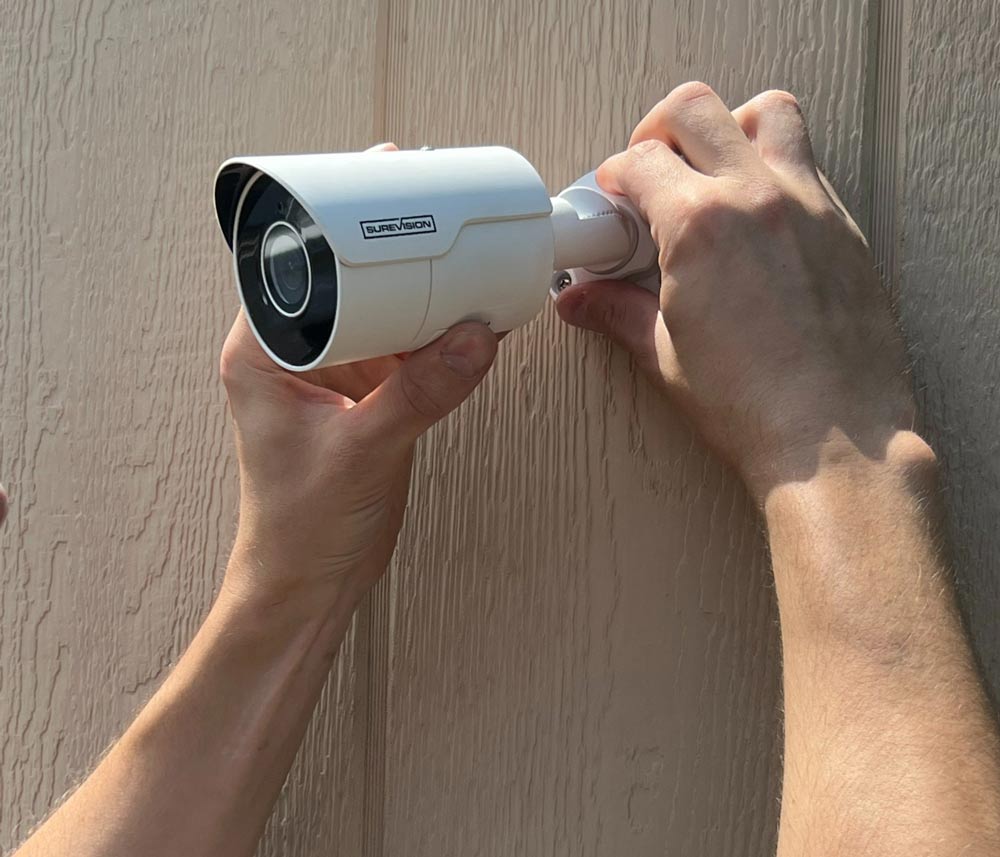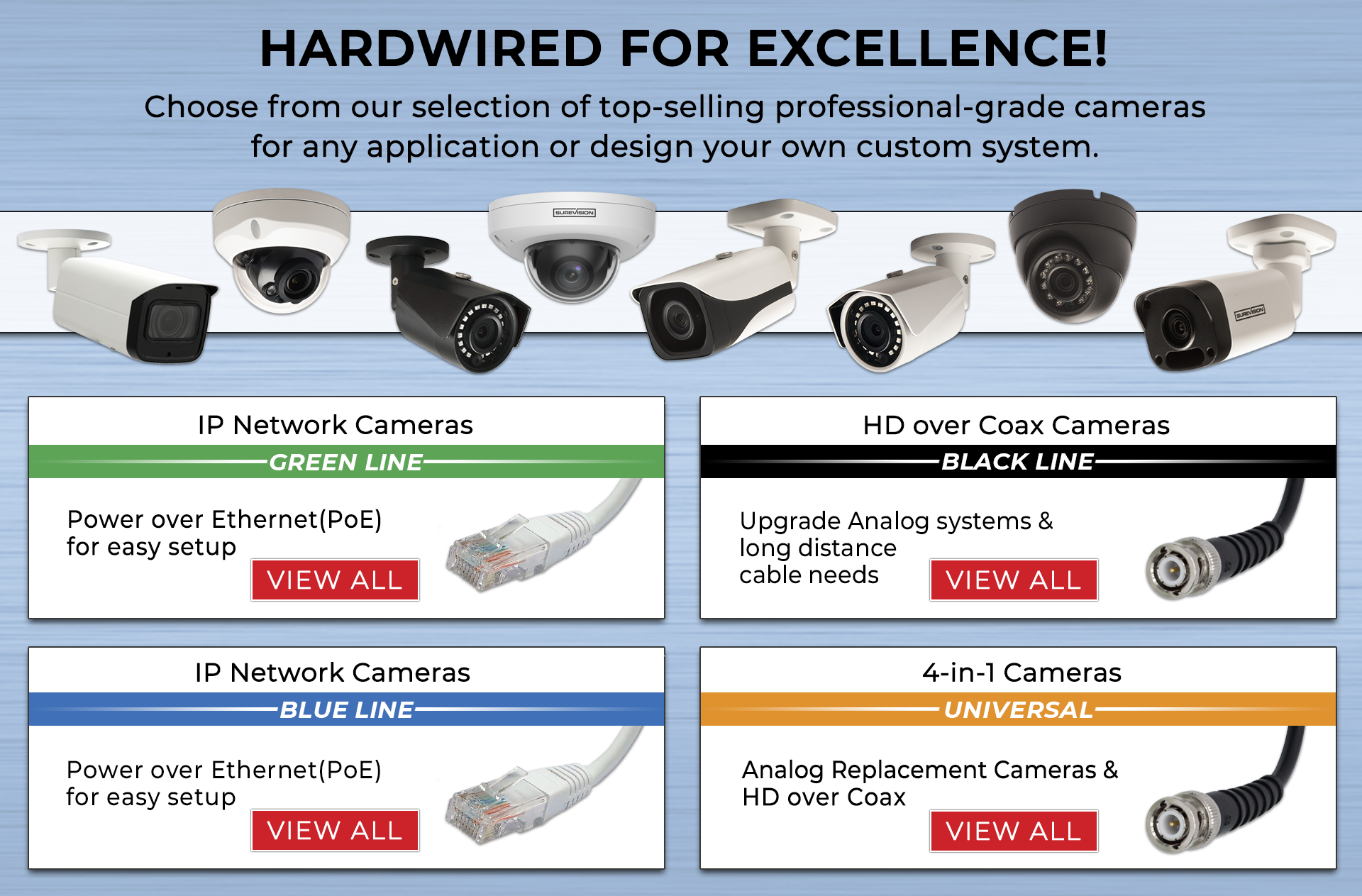Security Camera Wiring Installation: Do it Yourself & Save
Jul 9, 2024
Here we’ll cover wiring a security camera system. How to connect your cameras and recorder to provide power and a video feed, including for remote viewing via smartphones and computers.
We always recommend wired systems when possible. We offer two different types of wired security camera systems - HD over coax and IP camera systems. Start your security camera wiring installation by identifying which type you have, or which type to buy if you’re still looking for the best system for your property.
IP vs Coax Security Camera System Wiring
Wiring a security camera system can be the most time-consuming part of security camera installation unless you already have wires in place. The first consideration is the type of security camera system you are wiring. HD Over Coax Systems use different wires than IP security camera systems.
- If you purchased an HD over coax system, you will be using our RG-59 siamese coax (video/power) cables or our plug-and-play two-in-one power video cables.
- If you are wiring an IP security camera system, you will use CAT5/6 cable or our plug-and-play CAT5 cables
Security camera systems like ours here at CCTV Security Pros use power and video capability in each cable end to make your installation fast, simple, and easy. We offer spools of CAT5, RG59 cable, and pre-cut plug-and-play cables here on our cables & connections page. When you purchase a spool of cable, you can make your own connections with the materials we provide. When you purchase our complete systems with pre-made cables, the connections are already on the cables. That makes installing and wiring your security camera system a snap.
Both HD over Coax and Network IP types of wired security camera systems feature remote viewing via smartphones and computers. It’s a function of DVR and NVR recorders that can be set up after the wiring is installed.
IP Camera Cable Has Power Over Ethernet
You will use CAT5/6 cables when wiring your security camera system. Our IP security camera systems, with up to 16 cameras, offer built-in power over ethernet (POE), so one Ethernet cable per camera is required to wire your standard IP camera system.

Wiring an IP Camera System
The Tools You’ll Need
- Cat5/6 security camera wires
- Drill
- Fish tape (optional)
- POE injector (for longer cable runs)
We will now discuss wiring an IP camera system. An Ethernet cable contains eight insulated copper wires split up into four pairs. With each pair, the wires are twisted around each other over the length of the cable in order to reduce signal interference. These wires are referred to as twisted pairs. Knowing the composition of the wire you’re working with will help with security camera wiring installation.
Making an Ethernet cable is easy using one of our bulk boxes of cable and RJ-45 connectors that you will attach to the end of each side. To make a CAT5/6 cable (a.k.a patch cables) with connections, simply cut the plastic sheath about an inch from the end using a crimping tool. Then, unwind and pair similar colors. Pinch the wires and ensure the colors are matched appropriately. Make a straight cut with scissors so the cables are approximately ½ inch in length. Push all 8 wires into the connector with the top of the plastic sleeve being pushed into the connection as well. Place the connector into the ethernet crimper and push down tightly until it locks into place. You have now completed one side of the cable. Do the same to the other side.
After preparing the connections, click one end of the RJ-45 crimp into the camera, and the other end into the network video recorder. You have now finished wiring the first camera of the system. Do the same to every camera to completely wire your security camera system.
Running the Security Camera Wires

If you are running CAT5/6 Ethernet cable indoors, simply drill a hole to run the Ethernet cable through any walls from the camera to the network video recorder. If the distance from the camera to the network video recorder is too long, you will use a POE injector or POE switch to increase the distance by up to 328 feet. Make sure to have an extra few feet on each side of the cables so you can allow room for cable termination and reorganization if needed. It is never a bad idea to label the ends so you know which camera is for each.
Wiring Security Cameras Through Walls
To install security camera wiring through a wall, drill a hole in the wall or use a wall plate and attach the cables to fish tape in order for you to “fish” the wires through. Consider using security camera wire protectors such as a tube to protect the cables. If running through the ceiling, consider using a cable guard or conduit so the installation looks neat, clean, and professional, and so that the cables are hidden.
Wiring Your Security Camera System Outdoors
When wiring cameras from inside to outside, drill a hole from the outside where the camera is being placed and run the cable back to the NVR. Use wire guards to hide and protect the cable. Conceal the wire holes with silicone or duct seal so moisture or water does not get into the cable.
How to Safely Bury Security Camera Cable
If you’re installing your security camera wiring outside at a longer distance, consider burying the cables with PVC, wire guard, or metal conduit pipe. Be sure to bury the cables in the PVC conduit about 18 inches underground to protect the cable from tampering. Also, consider drip holes to prevent water from reaching power outlets through the hole. Drill holes to run the cables from the inside to the outside. Now it is time to run the cable. Wrap the wire through the fish tape and twist the end of the wire around itself. Place electrical tape around the fish tape and wire. You are all set to pull the wires. We recommend doing this slowly in case the cable gets stuck. If you’re wiring your security camera system with our plug-and-play CAT5 cables, then the crimp on your RJ-45 connectors will already be attached to each end. Plug one end into the camera, and the other into the NVR.
Wiring HD over Coax Systems
The Tools You’ll Need
- RG-59 BNC connections
- RG-59 Crimping tool
- RG59 Stripping tool
- RG-59 Video Power Combo Cables
- BNC barrel
- Wire cutter
- Electrical tape
Both HD over coax cameras and analog cameras use a coax cable that runs from the camera to the back of the digital video recorder. Our RG59 and plug-and-play cables will provide both video and power to the security camera(s) and recorder. When using our plug-and-play coax cables you will be provided the BNC connections and power pigtail connections needed to connect each camera to supply both power and video.
If you’re wiring your security camera system with an RG59 spool of cable, you will notice that there is shielding to maintain maximum protection from signal interference. When you cut the cable you will notice that there is a coaxial cable for the video, and two copper 18 gauge wires for power. These copper wires will need to be used to power your cameras. The two 18 gauge wires are used to transmit power from the multiple output power supply box (usually located by the DVR) to each camera.
Plug in the positive and negative of the 18 gauge wire to the corresponding positive and negative inputs of the multiple output power supply. Use a 2.1mm power connector referred to as “pigtails” in order to convert the two 18 gauge wires into one plug in order to power the camera. For the video, simply install BNC twist-on or crimp-on connectors to each side of the coaxial video cable ends. Utilize our other security camera wiring installation guides and videos to make sure you apply all the connections properly. Both ends of the coax cable will terminate with the BNC crimp on or twist on connectors. The 18 gauge wires will be connected to the power supply box by the DVR. The BNC video connectors plug into the cameras and into the back of the digital video recorder.
Wiring a Complete Security Camera System
When you purchase one of our complete security camera systems, we provide all the cables and connections needed for installation. That includes spools of premade CAT5e cables for IP camera systems and spools of RG59 cable for HD over coax systems. These systems include 100 feet of cable per camera with the necessary connections pre-attached to the wires. Simply plug one end of the cable into the camera and the other end into the recorder to connect the video feed. Simply connect the video and power to the camera, and the other side to the recorder and power supply box if wiring our HD coax system.
Some of our customers wire their security camera systems with a Power over Ethernet (PoE) switch, so that their Ethernet cables can connect their security cameras to power over greater distances. These devices can increase the range of power transmission by up to 328 feet. A POE switch is needed and provided with our 24 camera systems and above. With this method of security camera wiring installation, the POE switch provides power to the camera. You only need to worry about running the video cable to or from your security cameras. If you are using our systems with up to 16 cameras, our network video recorders come with a built-in POE switch and are connected directly to the back of the recorder.
Hiring Someone to Help Wire Your Cameras
Some of our customers ask who can run the wires for their security camera system. The truth is, you do have many choices for wiring your security camera system. It is a straightforward process and that is why many of our customers do it themselves and save. There are many types of businesses that offer wiring services, but you can find people familiar with wiring in many other professions. Some of our customers choose to use a local electrician or handyman. Many companies that we work with have IT departments that are used to wiring networks regularly. Companies that work in computer networking or cable networking may be able to assist you. If you know someone who’s installed cable boxes for TV and internet service providers, they could help do the job, too.
Many people choose to install their security camera wiring themselves, or with a friend or business partner. Wiring is not difficult, however, it can be time-consuming depending on the distance and location of the cameras. Remember, you will need to run wires from the recorder to each camera.
Wiring security cameras is also not dangerous. The wiring used for security camera systems like Coax and CAT 5 Ethernet is low-voltage. So even an accidental electric shock won’t do much harm. If you need professional installation we can help. Check our our security camera installer network.
HDMI and VGA Cables for Monitors and Remote Viewing
Whether using an NVR with your IP security camera system or a DVR with your HD over coax system, you probably use an HDMI cable to connect your recorder to an external display monitor or TV. Our recorders also have an output for a VGA computer monitor. VGA gives you the same functionality as HDMI so you can use VGA and HDMI cables simultaneously to view your system on two different monitors.
All of our security camera systems can be wired for remote viewing. Run a CAT5/5 Ethernet cable to connect your DVR or NVR to your network to view your cameras over the Internet or smartphone. After connecting the CAT5/6 camera you will download your PC remote viewing software or cell phone app to view your cameras worldwide anytime, anywhere. We do not charge any additional fees for this service. There are no contracts, no subscriptions, and no cost at all.
A Final Word From the Experts at CCTV Security Pros
We hope you found this article educational when it comes to wiring a security camera system. We offer resources and videos on security camera installation for further instructions on wiring security camera systems in all types of different scenarios. Wiring is the part that generally takes the longest. If possible and applicable, use our plug-and-play pre-made cables to make the process even easier.
If you do have questions, call us at 888 653-2288. It is very important to install your security camera system wiring properly, so if you have questions, it is always a good idea to ask first. Installing our security camera systems is simple and easy. Want to learn more? Looking for a recommendation? See our top selling security cameras and systems and systems here at CCTV Security Pros.








